Disclosure: FMB Home Picks is committed to delivering independent advice and reviews on home products and services. When you purchase through links on our site, we may earn an affiliate commission. Learn more Contact us.
Want to know more about uPVC windows? In this guide we outline the cost, lifespan and repairs, as well as tips for furnishing and finishing windows.
uPVC windows are one of the most common choices for homes and there’s plenty of good reasons for that. They are cost effective, durable and a reliable window for your household and their popularity in the UK has grown exponentially in recent years.
Installing uPVC windows in your home comes with a whole host of benefits – double glazing windows can save you up to 10% on your energy bills annually. But, what are they and how much do they cost, how long do they last and can they be repaired? We’ll also discuss some styling tips and how you can customise them.
So, let’s examine everything there is to know about uPVC windows.
When we talk about uPVC windows, what we’re referring to is the material that the frame is made of as opposed to the actual double glazing window itself.
uPVC stands for unplasticised polyvinyl chloride, a material that is based on powdered plastic. In manufacturing, this material is heated up and injected into a mould in order to form the desired shape. Once the uPVC has cooled, it’s then cut and is prepared to be made into a window.
According to FineLine, uPVC became a popular material for home improvement use as an alternative to timber because of its durability and strong resistance against chemicals, sunlight and oxidisation from water – this makes it particularly ideal for double glazing.
Get windows quotes in your area
Discover how much new windows would cost for your home by answering a few quick questions
Although uPVC and PVC sound very similar, there’s a different process for manufacturing the two and they have very different end uses because of this.
Firstly, PVC is polyvinyl chloride – a lightweight plastic that is commonly used in construction due to its strength and durability. To increase its flexibility, special plasticisers can be incorporated into PVC, making the end material less rigid.
uPVC is the end result of PVC that has had no plasticisers incorporated into it and so uPVC basically means unplasticised PVC. uPVC is a rigid, stiff material that is incredibly lightweight yet strong. It is frequently used as a substitute for wood, and this is evidently true when we think about how uPVC windows can be a cheaper substitute for timber window frames.
uPVC is to some extent considered an eco-friendly substitute for wood in cases where large amounts of wood cannot be sustainably sourced.
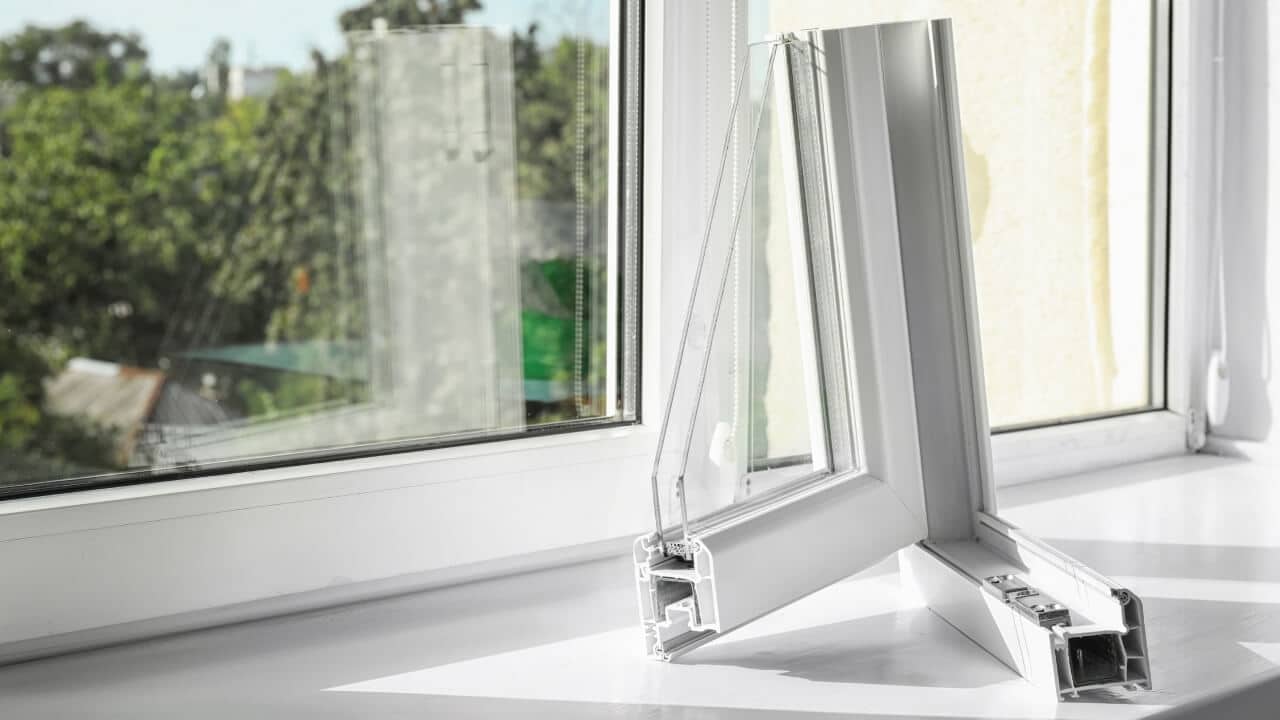
uPVC windows are light-weight yet durable and are usually designed with double glazing, though triple glazing is also available. (Image credit: Adobe)
The cost of your uPVC windows will depend on how many windows that you need installed. It also depends on the style of window, so we’ve examined casement and sash window prices from different installers since these are the most popular style of window. The below table outlines the average cost of installing uPVC windows, but does not include installation costs since this figure is determined on an individual basis.
| Property type | Number of windows | Casement upvc windows | Sash windows |
|---|---|---|---|
| Flat | 4 – 5 | £1,000 – £1,250 | £2,000 – £2,250 |
| Small house | 6 – 10 | £1,500 – £2,500 | £3,000 – £5,000 |
| Large house | 11 – 15 | £2,750 – £3,750 | 5500 – £7,500 |
uPVC windows come with many advantages like improving your home’s energy efficiency, noise reduction and more. But, that isn’t to say that installing them comes with no disadvantages. Below, we will highlight the main advantages and disadvantages so that you can make an informed decision on whether they’re right for you.
The price per window for a uPVC casement window ranges from £100 to £1,230 and a timber framed window is 50% more than a uPVC window, according to Everest. So, in short, yes uPVC is much cheaper than timber-framed windows.
In fact, uPVC windows are usually the cheapest option. As previously mentioned, they’re durable, cost effective and reliable, and for homeowners, the most popular choice. Modern uPVC is a quality investment for your home, especially if you’re on a budget.
But why are timber frames more expensive? Timber windows are the oldest type of material for windows and can last for years if they’re well looked after. The classic material can also add style, charm and value to your home too – according to Dale Joinery, double glazed timber windows can add an extra 10% to the value of your property.
The table below compares the average uPVC and wooden frame costs per window.
| Window style | uPVC | Wood |
|---|---|---|
| Casement window | £200 to £900 | £600 to £1,500 |
| Sash window | £700 to £1,100 | £1,100 to £1,900 |
| Bay window | £1,100 to £1,500 | £1,900 to £2,250 |
uPVC windows have many advantages over other frame materials.
They offer durability and strength, whilst keeping your home warm. Wood delivers similar energy efficiency, but aluminium is a greater conductor of cold, meaning less warm air remains inside, reducing their energy efficiency rating.
uPVC windows are usually the cheapest option for double glazing, with aluminium next on the affordability ladder and wood at the most expensive price point.
In terms of security, all three options offer good levels of security; however most installers offer their highest rated security measure on uPVC options over wood and aluminium frames.
There’s no denying that timber windows are aesthetically appealing, but they require regular maintenance to keep their good looks. Aluminium window frames tend to be much thinner in appearance, delivering a less stylish, contemporary look. uPVC, with its timber-look options, offers the best of both worlds. It’s almost maintenance-free, yet can have the appearance of timber and the quality that that lends to any property.
uPVC windows don’t last as long as wooden windows, typically lasting around 20 years. Timber windows could last as long as 60 years if they’re looked after, making them a worthwhile investment if you have the time and inclination to maintain them.
uPVC windows may last around 30 to 40 years, depending on how well you look after them. On average, they last around 35 years, but this depends on the quality and upkeep. Most uPVC windows come with a 10-year guarantee from your provider, although in reality they’ll last much longer.
After 25 years they may lose some of their insulating capabilities and you should assess whether it’s time to replace them.
If your uPVC windows were not recently installed, then they may need to be adjusted. uPVC frames are the most common type of frame in the UK, but that doesn’t mean they come without any maintenance. The most common reason for needing to adjust uPVC windows is due to difficulty opening and closing your window. If the window doesn’t seal and lock properly, this might create a draught, and if the lock mechanism doesn’t catch correctly the window won’t be effectively sealed.
Below we’ll outline the steps to carry out simple adjustments and repairs on your windows. If you’re not confident with DIY, then it might be best for you to call a professional.
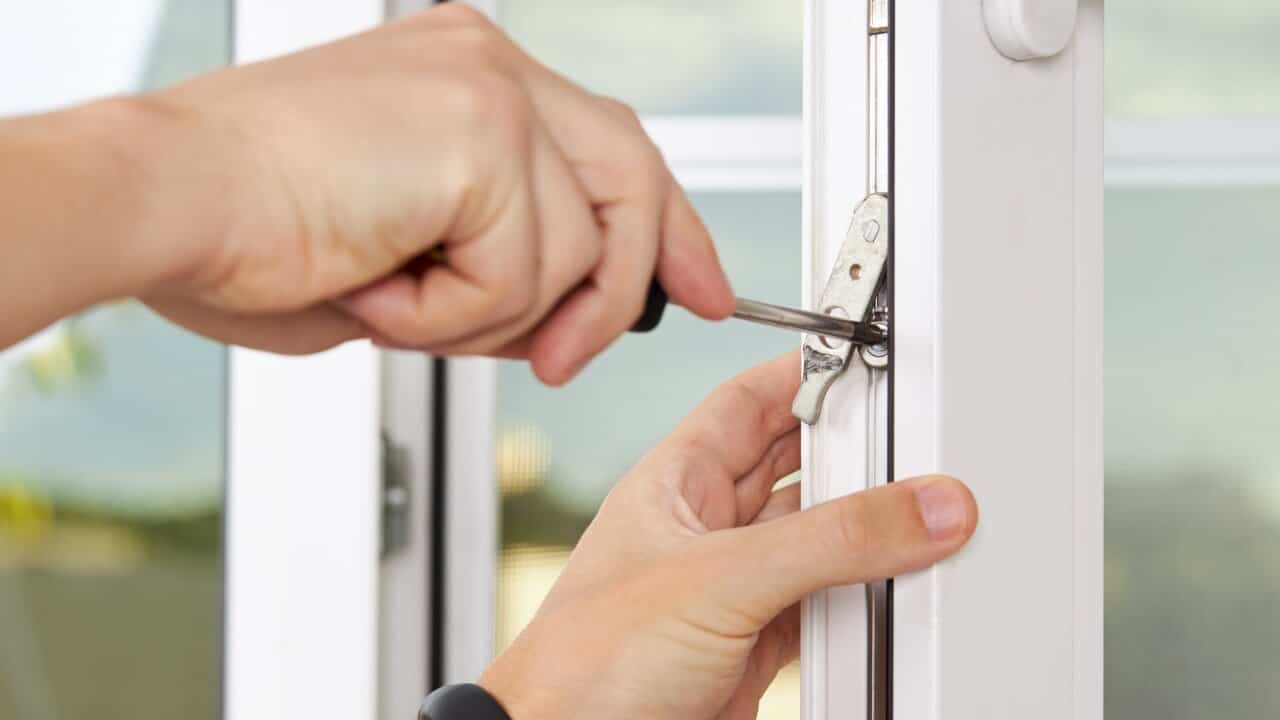
Adjusting the height of a uPVC window in the frame can be done with a screwdriver. (Image credit: Adobe)
Check whether the sash still fits the frame. Open and close the window a few times and check whether the sash slides easily into the window frame. If it sticks against the frame, this means your window’s height may need adjusting. You’ll need a screwdriver to adjust the height of your window.
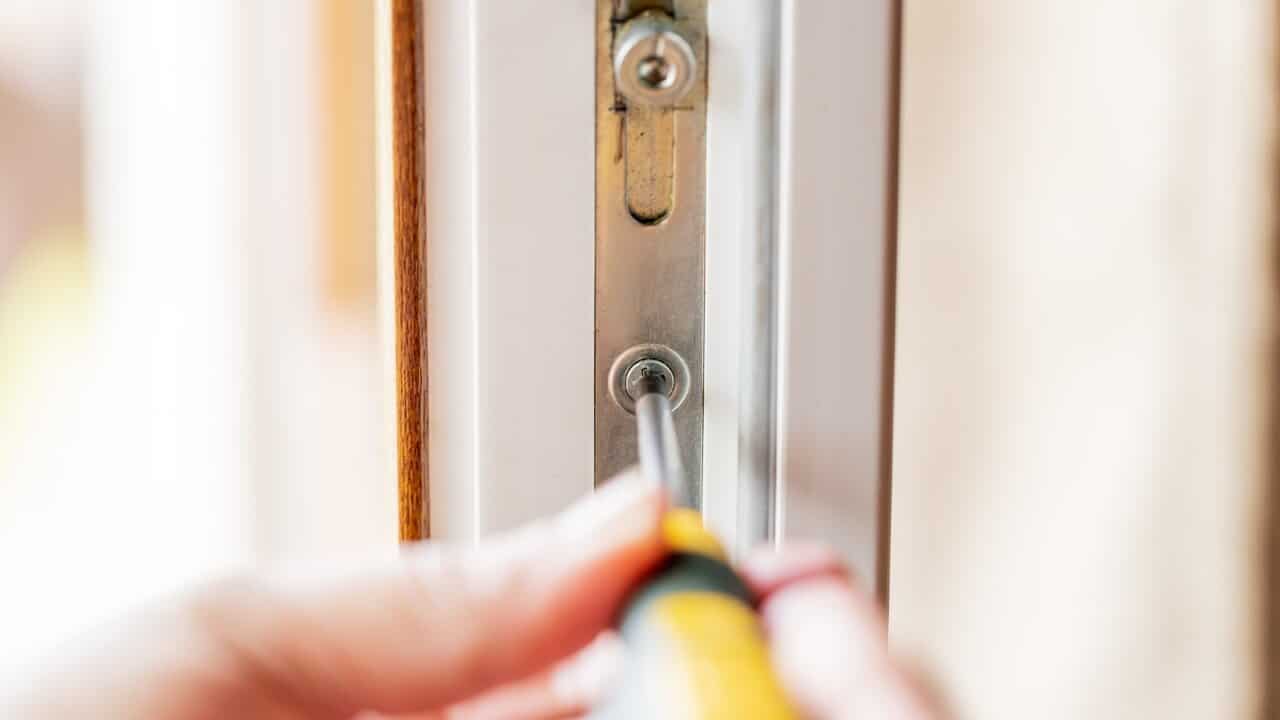
You can often adjust the lock in a uPVC window yourself using a screwdriver or an allen key. (Image credit: Adobe)
uPVC casement windows open outwards and they have a lock that you use to open, close and lock the window; so it’s paramount that this is functioning efficiently. If you’ve noticed your window is not locking properly, or the lock mechanism doesn’t quite catch, then this is how to adjust it to ensure your window is properly sealed.
uPVC windows are built to last and withstand weather conditions and changing temperatures, but this does not mean they come with no faults. uPVC windows often have common issues that can be fixed without calling in a professional. Here’s all of the common issues and how you can fix them.
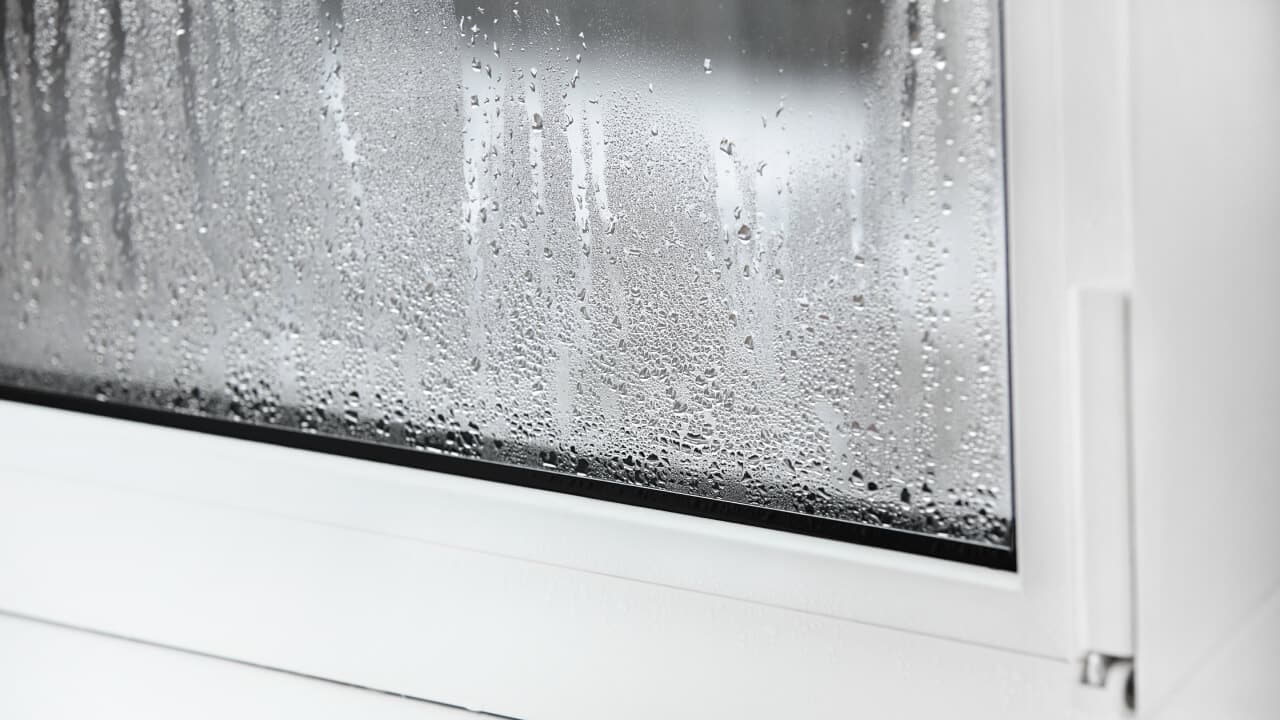
Condensation on your uPVC windows is a sign something is wrong. This should be repaired sooner rather than later to avoid long-term problems. (Image credit: Adobe)
Condensation on the inside face of the glass can easily be removed by reducing the level of moisture in your home. If condensation is forming in between the panes of glass, this could be due to the seal not functioning properly and you should call a professional to reseal the unit.
If your uPVC frame has turned yellow, this might be caused by a number of things. The most common reason is repeated exposure to UV radiation, particularly during the summer months. There isn’t much in the way of prevention that can be done, but high-quality uPVC should reduce the likelihood of this happening.
uPVC windows are fitted with something called a gasket, also known as a window seal or seal gasket. It creates a seal between the window and the frame to prevent the entrance of draughts and water into your house (they are also used to hold the glass tight against the frame or bead). Sometimes, if the window has been left open for a long period of time the gasket can become soft and attach itself to the frame. It’s important not to force the window if this happens, as this will result in a costly repair. However, using a bank card or a flat blunt knife, gently separate the frame from the gasket.
If the window mechanism has become stiff and difficult to open, it probably just needs some lubrication. uPVC is sensitive to some chemicals, so it’s best to use a silicon-based lubrication and this way should avoid any damage. This should then be carried out once per year and you should never have to worry about this issue again.
Cracked or broken glass, although rare in double glazing windows, can be easily replaced without needing to change your whole uPVC frame. Also, if you do have any damage to the frame, such as minor damage to the beading around the glass, if it has come loose, or there’s minor scratches or dents, this can be repaired in most cases. You will need to call a professional installer to help you with any glass repairs.
There is no one size fits all when it comes to uPVC handles, but rather many different types of window handles to choose from. These include the more traditional styles, as well as contemporary designs. The Espag is the type most commonly seen on uPVC windows.
What you need to consider when buying window handles is the spindle length, step height, fixing positions and blade length. Consider, too, the ergonomics of any design. Are they comfortable to use? Easy to pull closed and lock? These are all important factors.
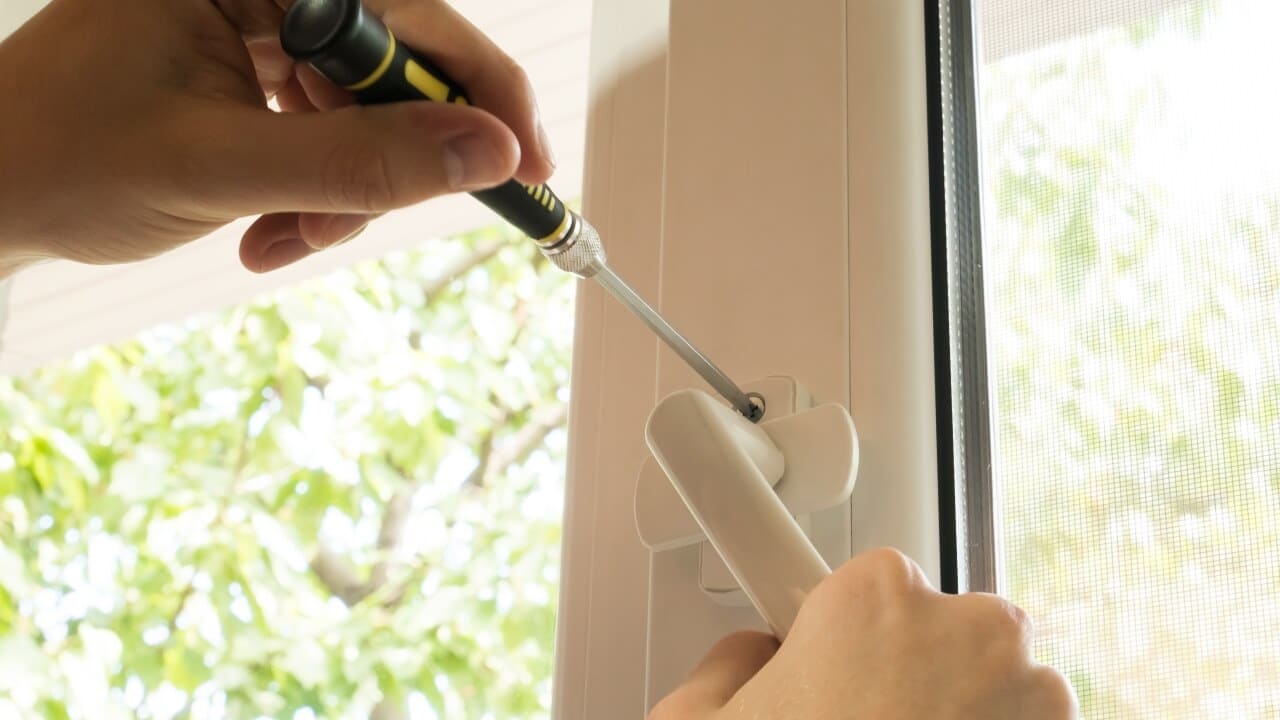
If you find the handles of your uPVC windows are loose, you can adjust them by tightening the screws on the base plate. (Image credit: Adobe)
Over time, uPVC window handles can become loose and feel wobbly. If the handle no longer has a solid feel, according to Everest this is usually the result of loose screws on the base plate.
To fix this, it’s as simple as tightening the screws with a cross-head screwdriver. There’s two screws on a window handle that are usually covered with plastic caps. Remove the screw head cap from the top screw and then tighten the screw. Next, lifting the handle, remove the bottom head screw cap and then tighten the screw and finally put the caps back on.
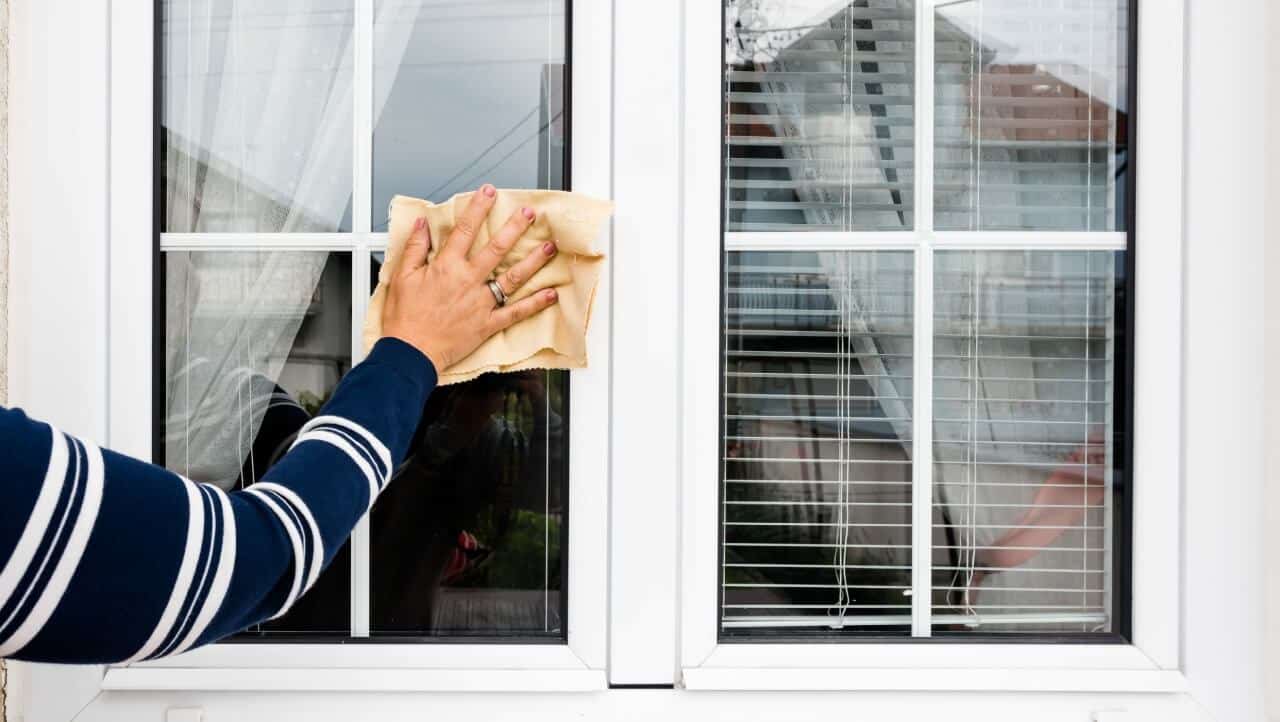
uPVC windows are easy to clean with warm, soapy water and a soft cloth. (Image credit: Adobe)
uPVC windows have an average lifespan of 20 years, but to keep them looking just as pristine as they were on the day of installation, you need to maintain them. Remember that your windows add value to your home as well as keeping it well insulated, so it’s worth maintaining them for the potential value they add.
According to uPVC Company, these are the ways to maintain your uPVC windows.
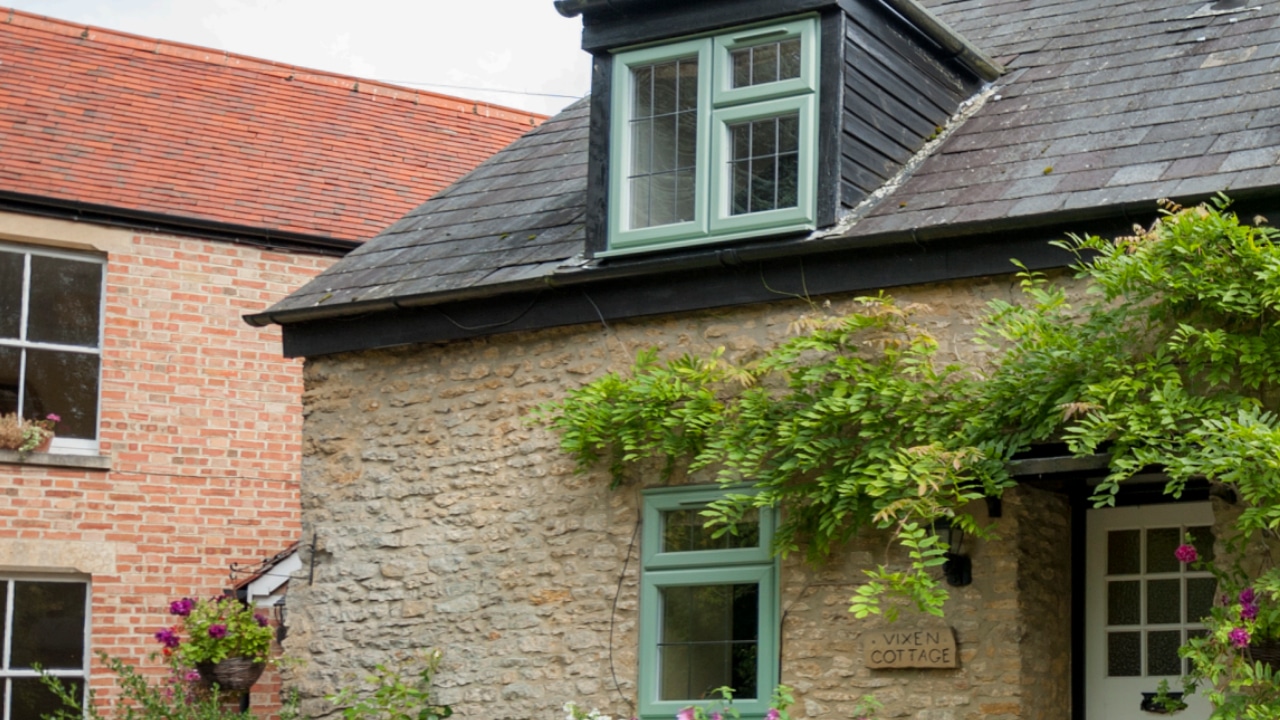
While it is possible to paint uPVC windows, check with your installer first to make sure this won’t void your warranty. (Image credit: Coral Windows)
If you’re not happy with the look of your uPVC windows, it is possible to paint them. However, we recommend checking with your installer first, as some companies state that painting windows voids any warranty left on them, according to Everest. If your windows are already out of the warranty period or you’re likely to replace them soon but want a quick fix to make them look better in the meantime, it could be worth painting them anyway.
However, you can’t just use any type of paint. To paint uPVC windows you should only use a solvent-based paint that’s formulated for hard plastics. You can’t use oil-based paints because they do not blend well with hard plastics.
It’s best to have a professional paint your windows because if it goes wrong, this is an irreversible design feature that you’ll have to live with.
Some popular paint colour choices include anthracite grey, which is a dark grey that gives your windows a modern, sleek appearance. This is a great design choice and will work well in contemporary homes.
Another popular uPVC colour choice is Chartwell green windows. Chartwell green is a light green that will give your windows a chic, vintage feel. This colourway is perhaps popular since Winston Churchill requested this specific colour to be used on the garden furniture at his country house – Chartwell – as it signifies reflection, harmony and serenity.
The very first step in preparing any window for painting is sanding. Sanding the frame will help to remove dirt and grease and provide a key for the paint to adhere.
You should prime uPVC windows before painting them. Priming aids the surface’s ability to bond with the paint. Some paints will claim there is no need to use a primer, but experts suggest it is always best to take this step for better results.
uPVC windows can cost anywhere from £200 to £2,250 per window. The cost differs depending on the type of uPVC window installed.
There’s no straight answer to this question. uPVC windows are the cheapest option, offering a greater level of energy efficiency than aluminium frames. The latter are poor conductors of heat, allowing more warmth to escape your home.
uPVC windows are available in a far wider range of styles, finishes and colours, allowing you to choose the look that’s right for your property.
The best way to clean uPVC windows is simply with warm soapy water – washing up liquid is ideal for this. Use only a soft sponge or cloth to clean them; do not use a scouring pad or cream cleaner, as this may scratch off the uPVC’s glossy finish.
If your uPVC windows have a draught this could be because the seal is broken, the window’s lock needs replacing or the hinges are not efficient. These should be replaced or repaired by a professional to keep your home well insulated.
Yes, uPVC windows can be adjusted, and most of the time you can do this without calling in a professional. There’s two common problems uPVC windows can have, and that’s not being the right height or the locks need replacing – this also depends on your window type. To fix these you just need a screwdriver or allen key and a guide to follow.
To adjust a uPVC window lock you’ll need an allen key. Or, if you’re adjusting a window that opens up and outwards you’ll need a screwdriver to adjust the height of the window frame.
uPVC stands for unplasticised polyvinyl chloride, which is a form of plastic. The material is lightweight yet durable, making it ideal for manufacturing double glazing windows. It is a cheaper alternative to timber, but it has a shorter lifespan.
The average lifespan of uPVC windows is around 20 years, though they may last longer with proper maintenance.
It is possible to paint uPVC windows, but we advise speaking to your installer first, as some companies state that painting your windows may void any warranty on them. If your windows are out of warranty, or you’re likely to replace them soon anyway, it might be worth painting them to give them a fresh look. Be sure to use only solvent-based paint. You may wish to hire a professional to paint your windows for the best result.